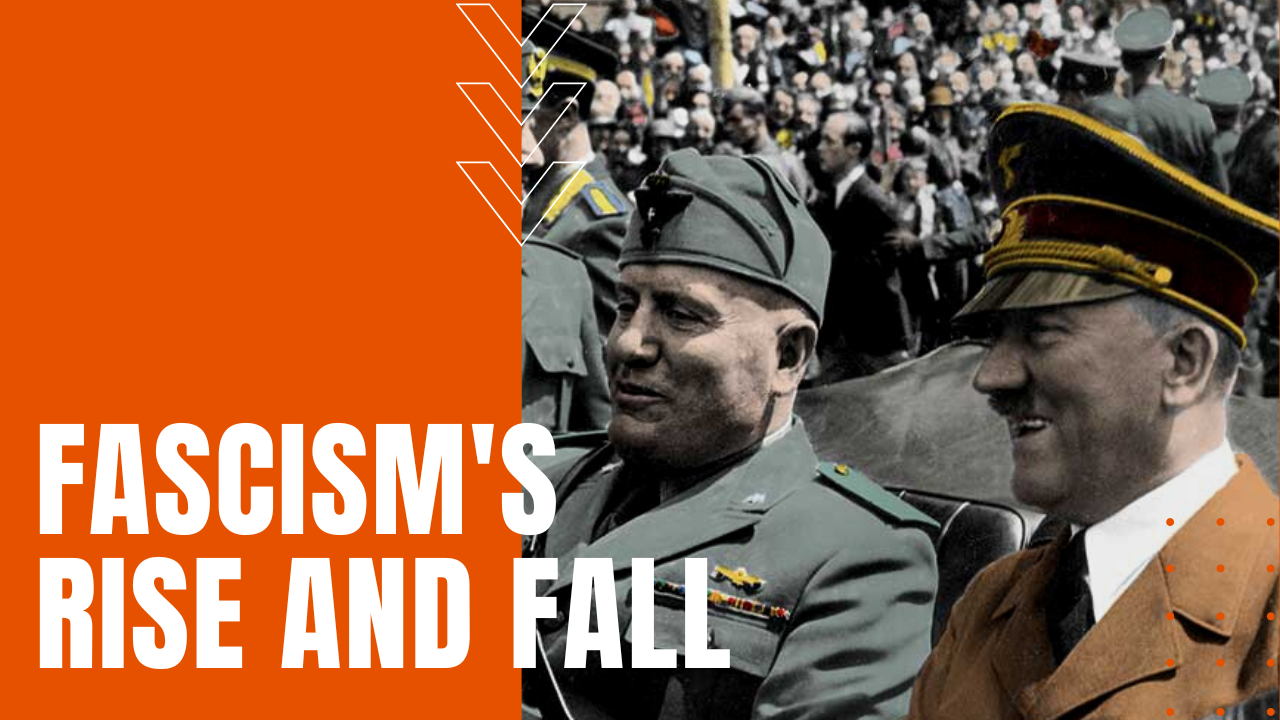Rise and Fall of Fascism: Mussolini, Hitler, and More

What is Fascism?
Rising to prominence after the First World War and ending with the second, Fascism was a far-right, authoritarian ultranationalist ideology that was first practiced in Italy before spreading to other nations like Nazi Germany.
Characterized by an autocratic dictator and extreme militarism, critics of Fascist regimes were forcibly suppressed through imprisonment, deportation or murder, while Fascists themselves believed in the subordination of individual rights in the name of a collective national good. Placed at the extreme far right of the traditional left-right political spectrum, Fascists opposed anarchism, democracy, liberalism and Marxism.
Mussolini’s Fascist Italy
By the end of World War One, Italy’s economy emerged in a poor and weakened state, suffering from food shortages, labor strikes, massive debt and protracted depression, allowing Benito Mussolini’s far-right National Fascist Party to come to power in 1922.
Il Duce, as he was known, saw war as a positive revolution, inspiring military citizenship that witnessed the involvement of every adult in Italy’s Second World War effort, mobilizing millions to either fight on the front lines or be integrally involved in the production and logistics of war munitions, war machines and essential supplies, under the belief that war was a legitimate means of achieving national economic recovery.
Hitler’s Nazi Fascism
Mussolini in particular believed in a dirigisme economy, with the goal of achieving economic self-sufficiency through protectionist and interventionist policies, Hitler’s Nazi Germany expanded Fascism to include beliefs in a master race of ethnic purity, leading to the forced imprisonment and murder of non-Aryan races.
As the Allies pushed their way north through Italy, on April 28th, 1945, the deposed Italian dictator and his mistress, Clara Petacci, attempted to flee war-ravaged Italy into neutral Switzerland, only to be caught and executed at the border by Partisan guards.
Two days later, Adolf Hitler committed suicide during the fall of Berlin to Russian forces, effectively ending Fascism as a viable political ideology.
Fascism Today
While predominantly white male alt-right and neo-Nazi supporters in the United States still embrace the core tenants of Fascism, the Fascist movements of the early and mid-20th century have remained mercifully buried in history, making Fascism, yet another failed experiment in human governance.
